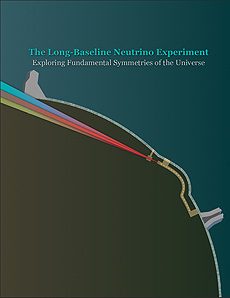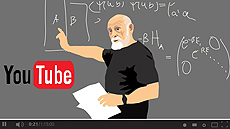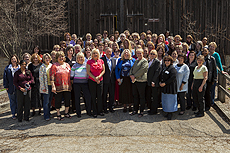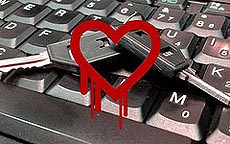|
Monday, April 28
- Breakfast: eggs benedict
- Breakfast: sausage, egg and cheese croissant
- Sloppy joe
- Smart cuisine: teriyaki pork stir fry
- Chicken curry
- Italian antipasto panino
- Italian pasta bar
- Vegetarian cream of spinach
- Texas-style chili
- Assorted pizza by the slice
Wilson Hall Cafe menu
|
|
Wednesday, April 30
Lunch
- Grilled lemongrass beef
- Rice noodle salad
- Almond cake
Friday, May 2
Dinner
Menu unavailable
Chez Leon menu
Call x3524 to make your reservation.
|
|
LBNE science book released
 |
| The new book on LBNE covers the experiment's scientific program and its current state of technical development and planning. |
Last week the LBNE collaboration released its comprehensive 300-page document on the science program planned for Fermilab's flagship experiment.
The Long-Baseline Neutrino Experiment: Exploring Fundamental Symmetries of the Universe presents the grand vision for the science of LBNE, its potential for transformative discovery, its current advanced state of technical development and planning, and its alignment with the national high-energy physics program. Colored boxes distributed throughout the document highlight important take-away points. They are integral to the document, but to the extent possible, are written in language accessible to the nonscientist.
Once the experiment is constructed, the LBNE beamline will send an intense neutrino beam 800 miles from Fermilab to a massive detector in Lead, SD. Using the world's most intense neutrino beam and largest underground cryogenic particle detector, LBNE will explore the origin of the matter-antimatter asymmetry in the universe, probe the stability of the proton, stand ready to witness the birth of a black hole or neutron star from a core-collapse supernova in the Milky Way, and search for new physics in unexplored regions.
|
Not just old codgers
 |
During a day of talks at Stanford University, theoretical physicist Leonard Susskind explained "Why I Teach Physics to Old Codgers, and How It Got to Be a YouTube Sensation." Image: Sandbox Studio |
Stanford professor Leonard Susskind has a well-deserved reputation among his colleagues as one of the most imaginative theorists working in physics today. During his nearly five decades in the field, he's taken leading roles in the study of quark confinement, technicolor, black hole complementarity, the holographic principle and string theory. Even now, at the age of 73, he's still in the thick of it, batting around ideas with his colleagues about firewalls, the latest twist on black holes.
Stop a random person on the street and read him Susskind's list of specialties, and he or she will probably say, "Huh?"
Yet Susskind has a thriving fan base among nonscientists who love their physics.
Part of this is due to his popular books on physics, but even before the first came out in 2005, he had a small but devoted cadre of non-physicists, many of them well past their undergraduate days, who took his "Modern Theoretical Physics" course, offered through Stanford Continuing Studies. In fact, many fans took the class over and over again. Cosmology, black holes, quantum mechanics, string theory — some of the thorniest areas in modern physics, with thorny math included — and the lecture hall remained packed.
Read more
—Lori Ann White
|
We appreciate our administrative professionals
 |
| Wednesday was Administrative Professionals Appreciation Day. Fermilab celebrated the day with a luncheon at Kuhn Barn. Photo: Cindy Arnold
|
|
Synopsis: Sterile neutrino as dark matter candidate
From Physics, April 24, 2014
A hypothetical neutrino that does not interact through the weak force could be the source of a recently detected X-ray emission line coming from galaxy clusters. However, previous models using this so-called "sterile" neutrino as a form of dark matter were not able to satisfy constraints from cosmological observations. Now, writing in Physical Review Letters, Kevork Abazajian of the University of California, Irvine, shows that a sterile neutrino with a mass of 7 kiloelectronvolts (keV) could be a viable dark matter candidate that both explains the new x-ray data and solves some long-standing problems in galaxy structure formation.
Read more
|
|
Heartbleed exposed: what it is and how it affects you
 |
| The Heartbleed bug in OpenSSL allowed information to leak through the software's heartbeat functionality. Image courtesy of Filippo |
Software is never completely free from bugs. Occasionally, a seemingly trivial bug can have far-reaching consequences. The Heartbleed bug in OpenSSL, which has gotten much media attention recently, is an example.
OpenSSL stands for open secure socket layer. This widely used set of software enables websites that might be collecting sensitive information to reliably identify themselves. This helps assure customers that they are dealing with those they think they're dealing with. It also provides secure encryption of data sent over the Internet so it cannot be "overheard" by electronic eavesdroppers.
OpenSSL allows outsiders to query an OpenSSL server to ensure it is functioning. The sign that it is indeed functioning is called a heartbeat. The heartbeat response is a small piece of data sent from the server back to the user who initiated the query. However, a programming error left the data size of this query unchecked. Consequently, hackers could request a very long response that included whatever happened to be sitting in the server's memory when it responded to the query.
By making many queries, a hacker can accumulate large amounts of sensitive information — supposedly secret information, such as passwords or credit card numbers — that customers sent to the OpenSSL server and, more importantly, the secret key that the server uses to identify itself to customers and to encrypt data. Possession of the secret key allows a hacker to eavesdrop on an encrypted conversation and create a website that masquerades as the real site from which the secret key had been stolen.
This sounds pretty scary, but in reality, although this bug has been present in one version of OpenSSL software for almost two years, there is no evidence that hackers were trying to exploit it before it was discovered a few weeks ago. A study from Lawrence Berkeley National Laboratory concluded that no attempts had been made to use this bug on any of their OpenSSL servers for the three months prior to its discovery. Furthermore, the secret key, the most dangerous piece of information that might be stolen, is not present in the server's memory except right after the server is rebooted, so they are not easy to capture. Most commercial vendors were not using any vulnerable versions of OpenSSL, and sites that were vulnerable quickly patched their servers. The most sensitive systems changed their secret keys just in case.
At Fermilab, any servers that had been susceptible have since been patched, and they were not collecting any sensitive information anyway. Functions such as email, SharePoint, Fermilab Time and Labor, ServiceNow and VPN were never vulnerable.
This is yet another reminder that the Internet is a dangerous place. You must constantly be alert. Perhaps the biggest danger associated with Heartbleed is spam email pretending to be from some service that has supposedly been affected by the bug. As always, be extremely suspicious of any email message that asks you to enter a username and password for any reason.
—Irwin Gaines
|
New employees - April
The following regular employees started at Fermilab in April:
Christopher Chiappini, ESH&Q; Robert Fogt, FESS; Fred Jenninga, TD; Robert Johnson, FESS; James Karambis, TD; Lawrence Kaminskas, TD; Nicolas Peregonow, SCD; Roland Ramos, CS; Steven Rueter, WDRS; Melody Saperston, PPD; Lisa Temple, DO; Tammy Walton, PPD.
Fermilab welcomes them to the laboratory.
|
|